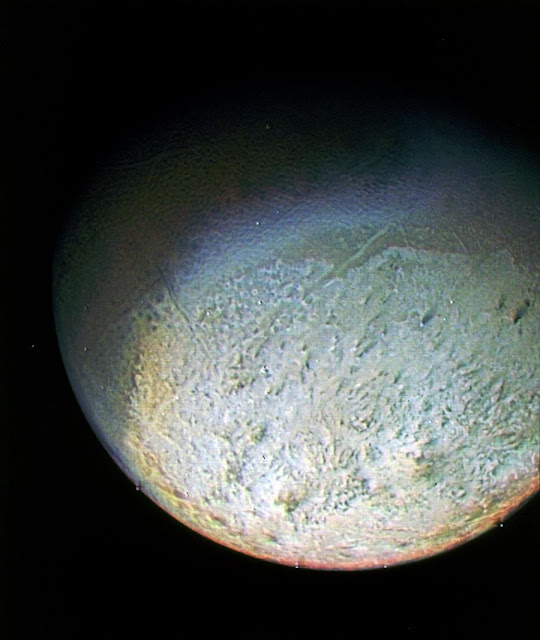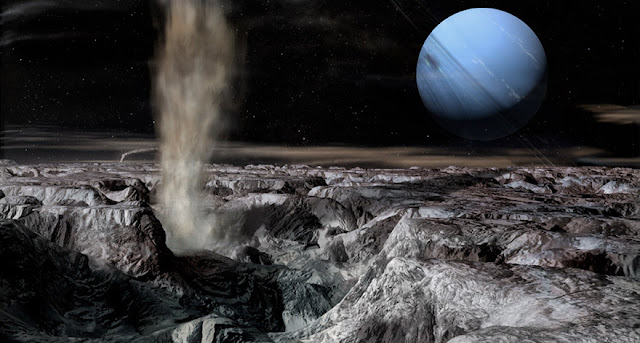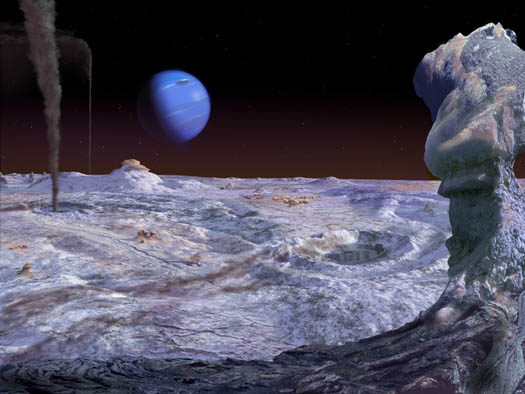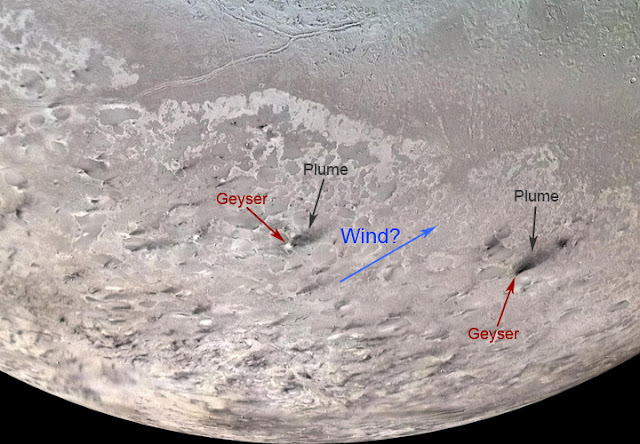THE LARGEST MOON OF
NEPTUNE, and comprising 98% of the mass orbiting the planet,
Triton is the only the moon in the Solar System to have a retrograde orbit, meaning it orbits in the opposite direction to all other moons.
 |
| Triton |
Because of its orbit, it is thought that the moon was once a
Kuiper belt object like
Pluto that was captured by Neptune's gravity.
Triton is also one of the few moons of the
Solar System to be volcanically active, however due to the very low temperature far from the
Sun, its volcanoes erupt water and ammonia rather than liquid rocks.
 |
| Surface of Triton |
It is large enough for its interior to have differentiated into a rocky/metallic core under an icy mantle. The contains enough mass that radioactive decay might be warming it from the inside, which could be responsible for the
Cryovolcanic activity.
 |
| Cryovolcanic activity |
In addition to cryovolcanoes,
Triton also exhibits geysers, which erupt with gaseous nitrogen for up to a year at a time.
 |
| Triton Geysers |
Because of constant volcanic activity, Triton's surface relatively young having wiped away almost all signs of impact craters.




No comments:
Post a Comment
Let me know guys what you think about this.